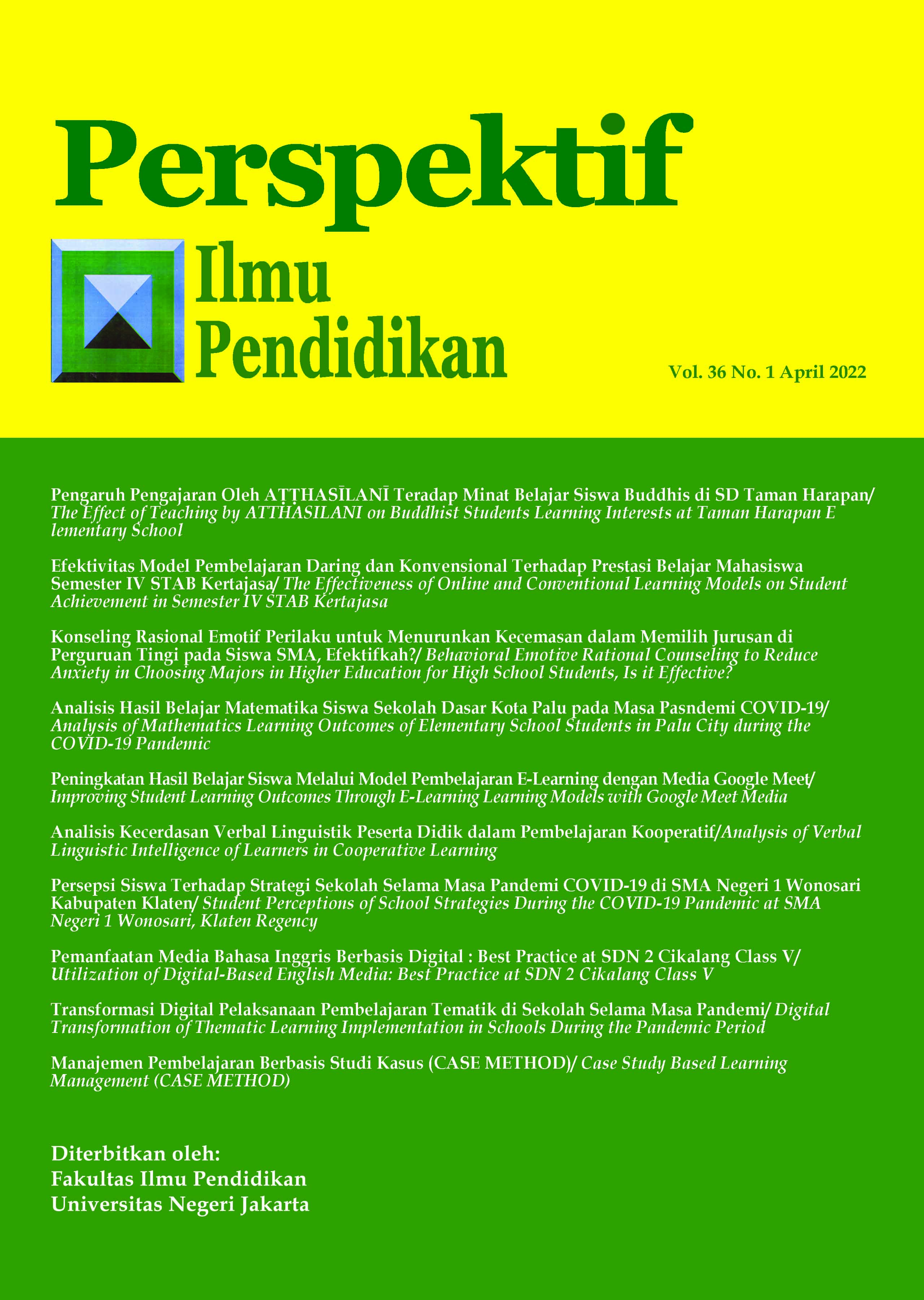The Influence of Aṭṭhasīlanī'S Teaching on The Learning Interest of Buddhist Students at Taman Harapan Primary School
DOI:
https://doi.org/10.21009/PIP.361.1Keywords:
Teaching, Interest in learningAbstract
Abstract: This research was conducted to determine the effect of Atthasilani's teaching on the learning interest of Buddhist students at Taman Harapan Elementary School. References to determine student learning interest can be measured through seven indicators according to Bahri (1-4) and according to Slameto (5-7), namely (1) feelings of pleasure, (2) student interaction, (3) interest, (4) student attention , (5) positive feelings while studying, (6) there is comfort while studying, and (7) the capacity to make decisions while studying. The design of this research is quantitative research which is supported by qualitative research. The instrument used is a written statement (questionnaire) with a Likert scale calculation and the t-test is supported by a list of interviews stated to 6 informants. The results of this study show that the interest in learning of Buddhist students in the teaching carried out by atthasilani mostly has an effective interest. However, based on the overall Likert scale calculation, teaching by subject teachers has the highest score of 40 and teaching by atthasilani has the lowest score of 25. Partially, there are several indicators that state high scores, some are moderate and some are even less. Thus, there are differences in teaching by atthasilani and teachers who state high gains on teachers so that there is no influence of teaching by atthasilani.
Keywords: Teaching, Interest in learning
Published
How to Cite
Issue
Section
License
Authors who publish with this Journal agree to the following terms:
- Author retain copyright and grant the journal right of first publication with the work simultaneously licensed under a creative commons attribution licensethat allow others to share the work within an acknowledgement of the work’s authorship and initial publication of this journal.
- Authors are able to enter into separate, additional contractual arrangementfor the non-exclusive distribution of the journal’s published version of the work (e.g. acknowledgement of its initial publication in this journal).
- Authors are permitted and encouraged to post their work online(e.g. in institutional repositories or on their websites) prior to and during the submission process, as it can lead to productive exchanges, as well as earlier and greater citation of published works.
-
Users/public use of this website will be licensed to CC BY-NC-SA Creative Commons Attribution-NonCommercial-ShareAlike 4.0 International License












